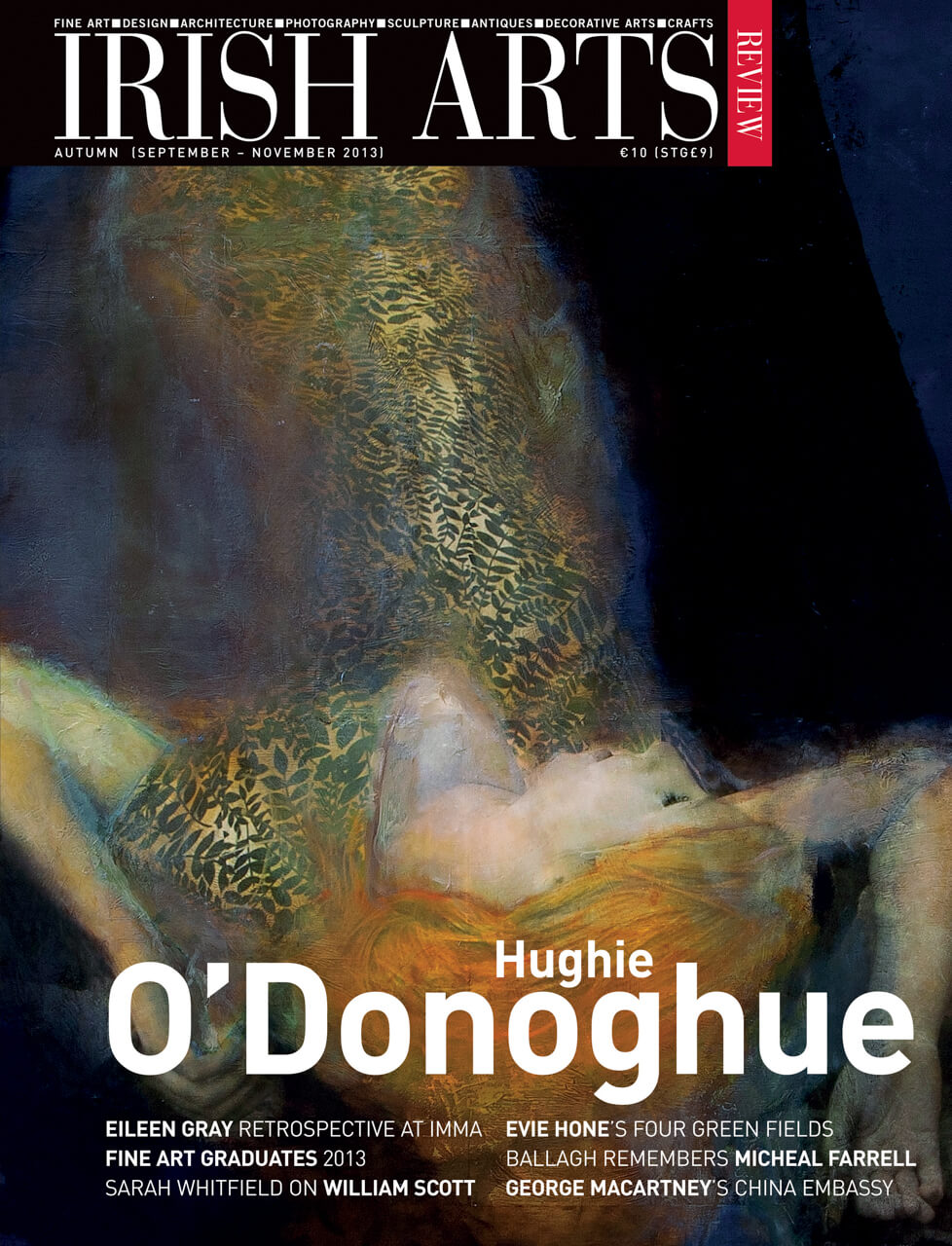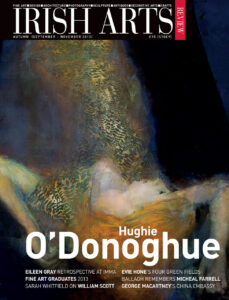

John Mulcahy recalls the history of Burtown House, Kildare and its Quaker associations most notably those of the writer Mary Leadbetter
Although the original Burtown estate covered almost 2,000 acres not far from where the Barrow flows through the market town of Athy, the house built early in the 18th century was a modest enough construction. As Mark Bence-Jones put it ‘The entrance front of two storeys and three bays now has the appearance of a circa 19th-century villa with the centre bay breaking forward and the fan-lighted entrance door recessed in an arch. The roof is eaved on a bracket cornice and the house was joined by screen walls to small wings of which only the fa√ßade of one remains.’1
The original house was simplicity itself. Off the broad hallway was a plain dining room to the right, with a study of similar proportions to the left, and from the hall a staircase ascended to a matching layout upstairs. It was just the sort of design you would expect from a righteous, God-fearing farmer who was also a Quaker – and such indeed was Robert Power who built Burtown House around 1710.
The house has remained in the same family since then, passing by inheritance through the Haughtons who were there in 1798, to the Wakefield family in the 19th century, and to James Fennell who married Jemina Wakefield in 1865. Their son, William James Fennell married Isabel Shackleton a descendant of the founder of the Quaker school in nearby Ballitore in 1720 (Figs 6&7). The present incumbent – also called James Fennell – is the great-great-grandson of James Fennell above so the broader family’s occupancy of Burtown House now stretches back around 300 years.
The present house however is very different to Robert Power’s modest construction. Caught up in the building mania of the Georgian ‘Tiger’ before the Union, Thomas Haughton added an extensive two-storey addition to the rear which included an elegant drawing room terminating in a bay-front onto the garden (Figs 2&3). This room is enhanced with a Wyatt-style plasterwork frieze and an alcove decorated more exuberantly with urns and foliage. Overall, Thomas Haughton more than doubled the size of the house which is now open to the public.
Committing radical thoughts or comments to paper had become a dangerous occupation when houses were being continually searched and ransacked by the military
But although the house and its gardens, its furnishings and its pictures, all offer their own areas of interest, it is the human associations with the house which provide its principal attraction. Today these include the resident squire young James Fennell who is a well-known photographer and associate of Turtle Bunbury in the Vanishing Ireland series of books. Also resident on the estate is James’ wife and young family and his mother the artist Lesley Fennell, many of whose works are to be seen in the house. Then there is James’ maternal grandmother who is the celebrated botanical artist Wendy Walsh, author of many books including the definitive An Irish Florilegium and still painting in her 98th year (Fig 5). But the deepest human association with the house is through the Shackleton family and the extraordinary story of the Quaker settlement around Ballitore which lies just a few miles to the east of Burtown House and borderd the grounds of the original estate.
The Quaker migration to Ireland started after the Cromwellian wars at a time when William Penn, whose father had been granted MacCarthy lands and Macroom Castle in Cork, became a force in the Religious Society of Friends both in Ireland and in America. Colonel John Fennell was an officer in Cromwell’s army who was granted a small estate on the banks of the river Suir outside Cahir in Co Tipperary. Abraham Shackleton was a tutor who came from Yorkshire and in 1726 he established the school at Ballitore. Initially the school catered for local Quaker children but soon developed a remarkable boarding school for pupils of different denominations and nationalities whose parents could afford the not inconsiderable annual stipend of £24. Famously Edmund Burke boarded there for four years as later did the ’98 rebel Napper Tandy and later still Paul Cullen from nearby Prospect House who would afterwards become the Catholic Archbishop of Dublin. Abraham’s son Richard followed his father as headmaster in the school and by his second wife produced Ballitore’s most famous resident, Mary Leadbeater (née Shackleton 1758-1826).
Thanks to the liberal education in her father’s school, which for women at that time was exceptional, and to the Quaker tenets on which she was raised, Mary Leadbeater developed into an early Irish feminist and pacifist. The Quakers had no aspirations to become part of the ruling class: they refused to serve as jurymen, refused to take oaths and refused to join the army. And, of course, they shunned the use of alcohol. But Mary participated very actively in the life of the village, sometimes working as the postmistress but always recording in her diaries the life and times of this close-knit community in which the radical ideas of the time were under constant discussion. Richard Shackleton was in regular communication with Edmund Burke and active in the anti-slavery movement. Mary was reading Mary Wollstonecraft’s A Vindication of the Rights of Women and Thomas Paine’s The Rights of Man. Quakers Friends from France and America were regular visitors to the village. And when Mary visited London with her father in 1784 she was introduced to the company of Joshua Reynolds, George Crabbe, the Edgeworths and, of course, the circle of Edmund Burke.
Mary Leadbeater was the author of several worthy publications such as Original Anecdotes for the Improvement of Youth (1794), Biographical Dictionary of Irish Quakers (1797), Cottage Dialogues among the Irish Peasantry (1811), Tales for Cottagers and Lives of Irish Peasants (1822), which typically she published anonymously. But she is best remembered for her posthumously published Annals, and particularly for those which cover the horrific week of 24-28 May 1798 in Ballitore. The village doctor, Frank Johnson, who tended the wounded on all sides was murdered by the dragoons. A young Yeoman, Richard Yeates, son of Squire Yeates of Moone Abbey was shot and piked by the rebels despite pleas while on his knees, from the priest Cullen. Many rebels were burnt alive in tar barrels by the Tyrone Militia or simply hung from the trees.
But the greatest horror of 1798 recorded by Mary Leadbeater was surely the tragic death of her own four-year-old daughter Jane:
‘Just then my sweet Jane told me she wanted to go upstairs and I most unfortunately, stupidly and carelessly trusted her with a wax taper, though I thought me not, and then again she was so steady, and though I am most attentive to the danger of fire she went not into mother’s room but into the one over the parlour and setting down the candle on the floor I suppose when she rose from the pot it caught her. I heard her cries and immediately apprehended the cause. We found Molly Webster attempting to put out the fire’‚Ķ .2
Jane died of her burns the following day.
Regrettably, there is no mention in the Leadbeater diaries of Burtown House but then again in her Dictionary of Irish Quakers Mary fails to mention the names of either a Shackleton or a Haughton. Perhaps she deliberately excluded references to her family? And, as Kevin O’Neill has noted in his studies of the period, letters to or from Mary Leadbeater are hard to come by. Committing radical thoughts or comments to paper had become a dangerous occupation when houses were being continually searched and ransacked by the military.
In the 19th century, several Shackleton cousins were prominent in other fields. Lydia Shackleton who was born in Ballitore in the same year as Mary’s death, was a distinguished botanical artist who executed over 1,500 watercolour portraits for the National Botanical Gardens which are still in their collection. Another cousin was Ernest Shackleton the Antarctic explorer, from nearby Kilkea. His younger brother Frank Shackleton, the Dublin Herald of Arms in 1911, was suspected of involvement in the theft of the regalia of the Grand Master of the Order of St Patrick known as the ‘Irish Crown Jewels’. In later life, this Shackleton was associated with several dubious businesses, being declared bankrupt in 1910 with debts of nearly £85,000.
The village of Ballitore never really recovered from the devastation of the rebellion. The school had closed temporarily but then reopened and struggled on until 1836. The population too declined and the Quaker community gradually dispersed. Of course, other, greater forces were also at work to hasten the decline of the rural idyll as the industrial revolution brutally transformed the traditional landscape. Indeed the fate of Ballitore is uncannily predicted in Oliver Goldsmith’s lament for The Deserted Village penned some years earlier.
Ill fares the land, to hastening ills a prey,
Where wealth accumulates, and men decay:
Princes and Lords may flourish, or may fade;
A breath can make them, as a breath has made;
But a bold peasantry, their country’s pride
When once destroyed, can never be supplied
Today Ballitore village is but a shadow of its former vibrant self. Of course, the peasantry was decimated by the famine and through emigration before many of the larger estates were broken up including Burtown estate which was reduced from 2,000 acres to the 180 there today. Happily Burtown House itself has survived with the same family and in a very different society.
Photography by James Fennell.
John Mulcahy is the Editor of the Irish Arts Review.
1 Burke’s Guide to Country Houses by Mark Bence-Jones (1978).
2 The Annals of Ballitore compiled and edited by Mario Corrigan, Michael Kavanagh and Karel Kiely with an introduction by John MacKenna (2009).



